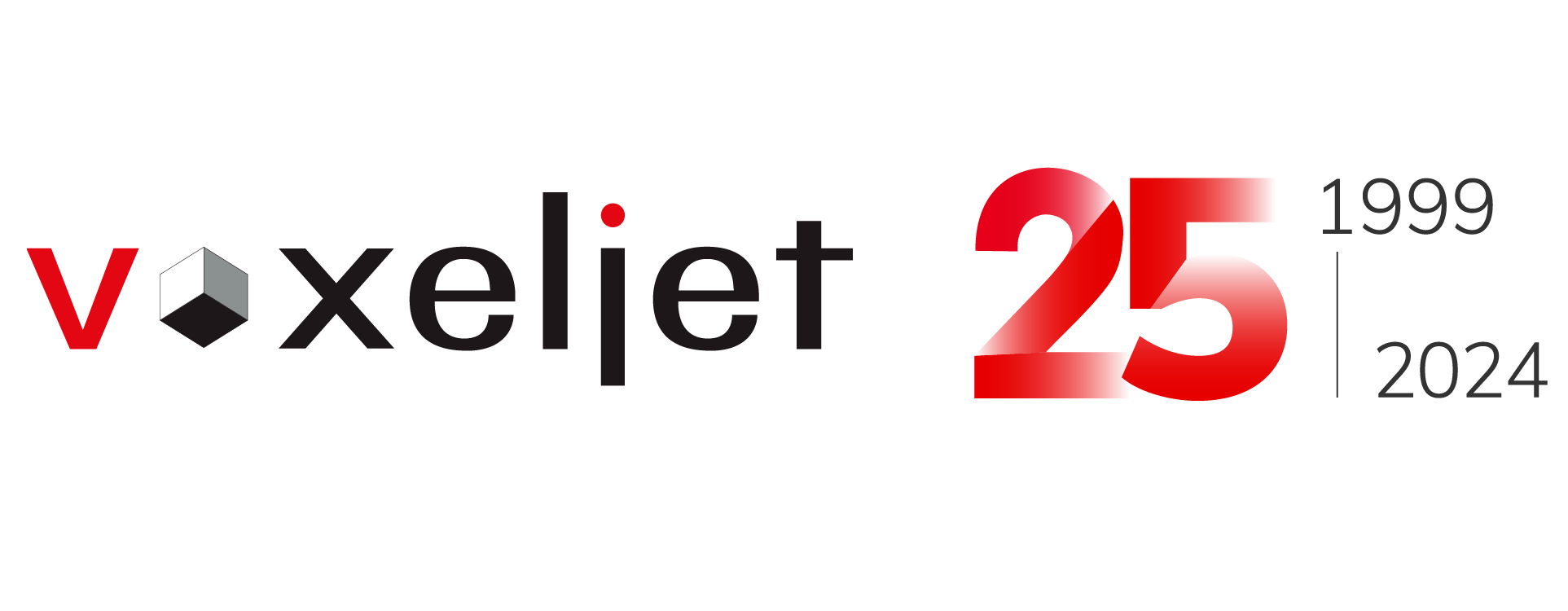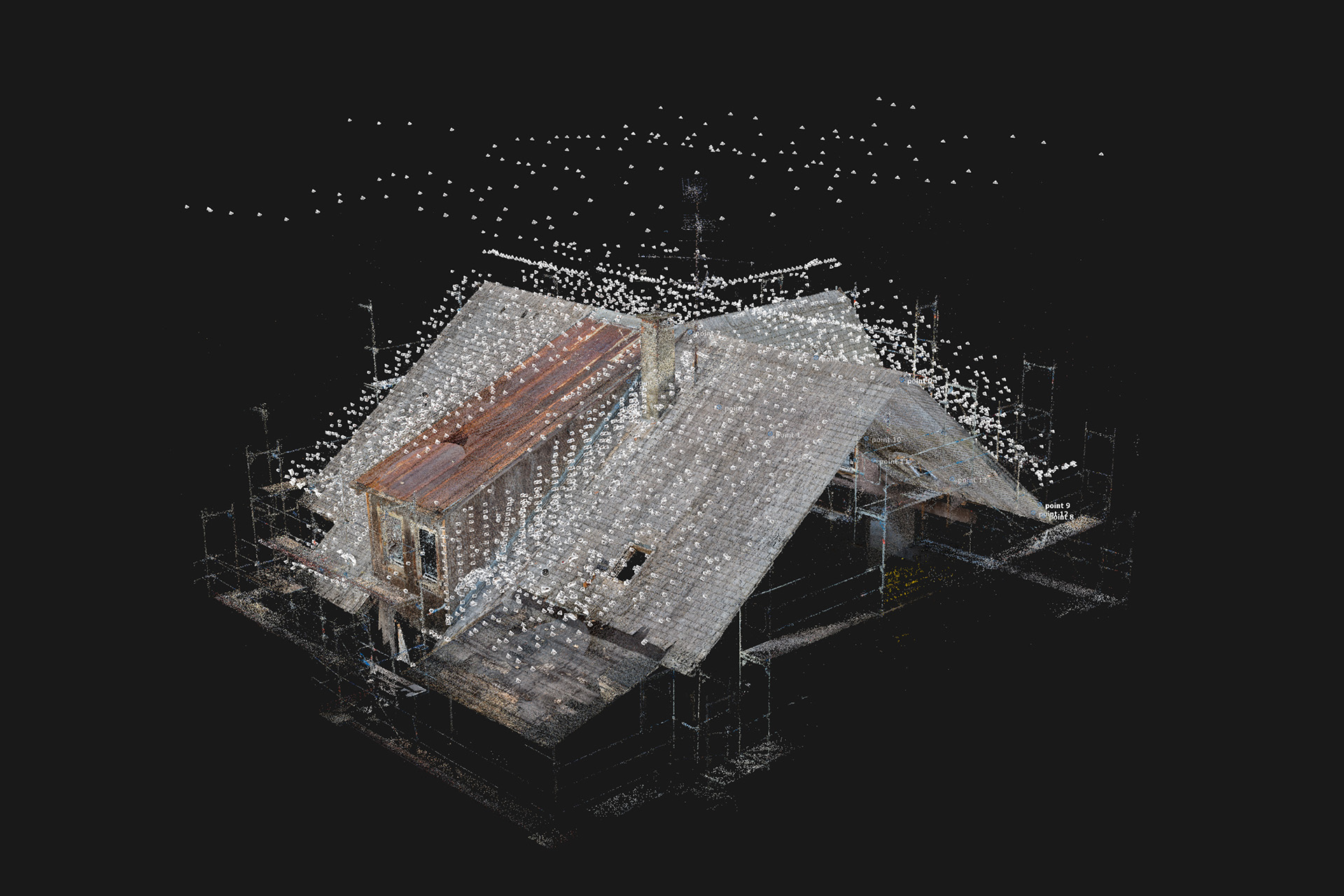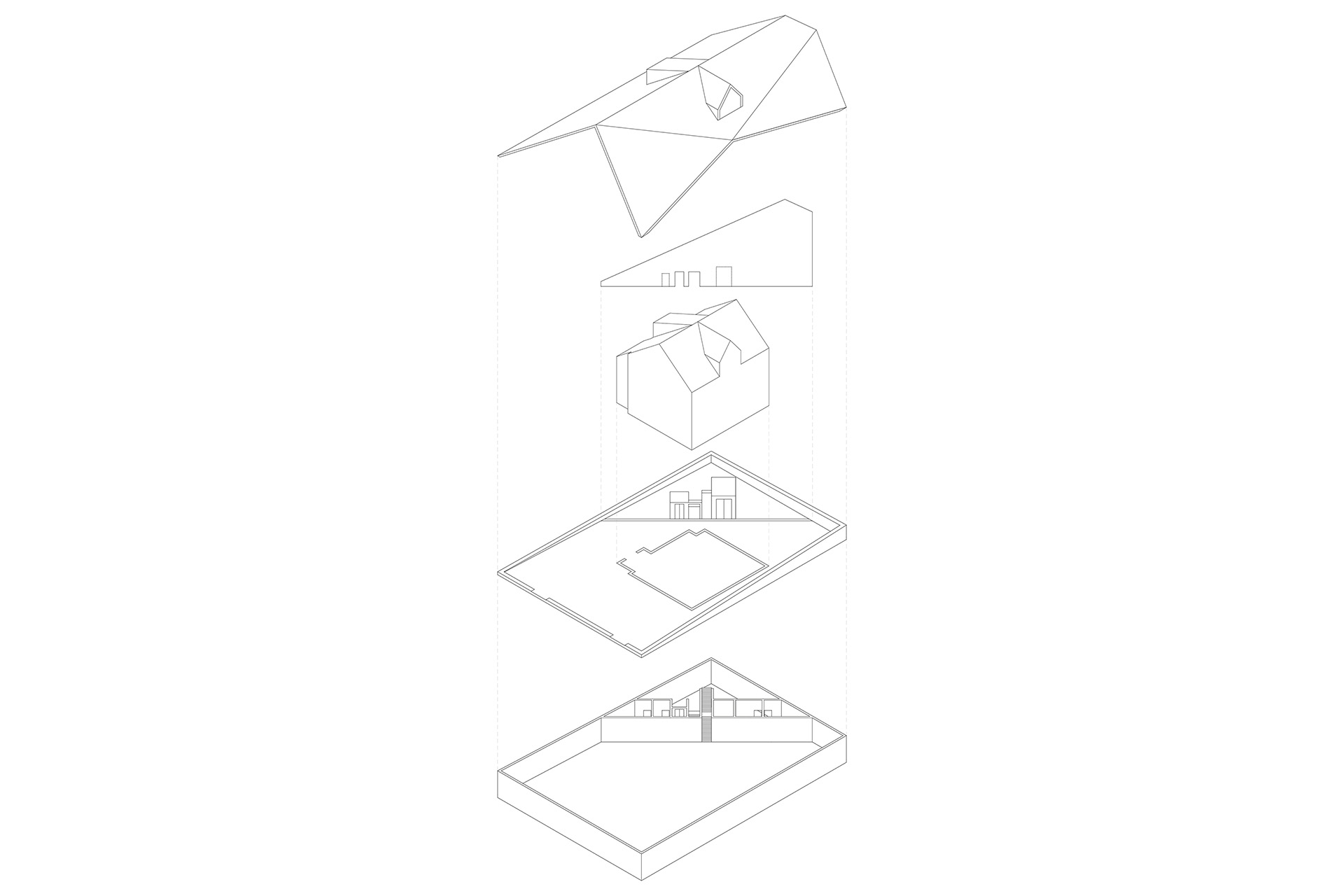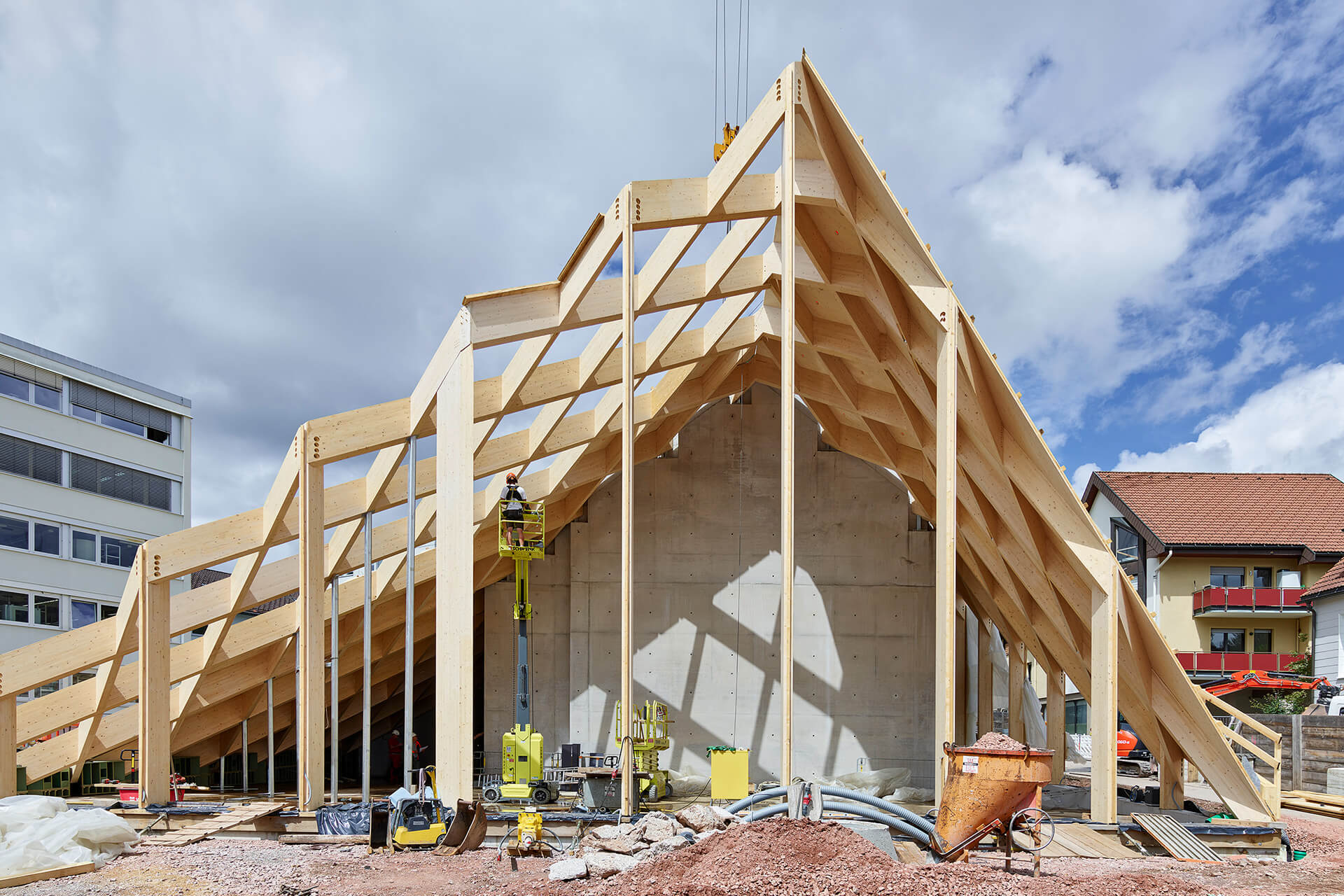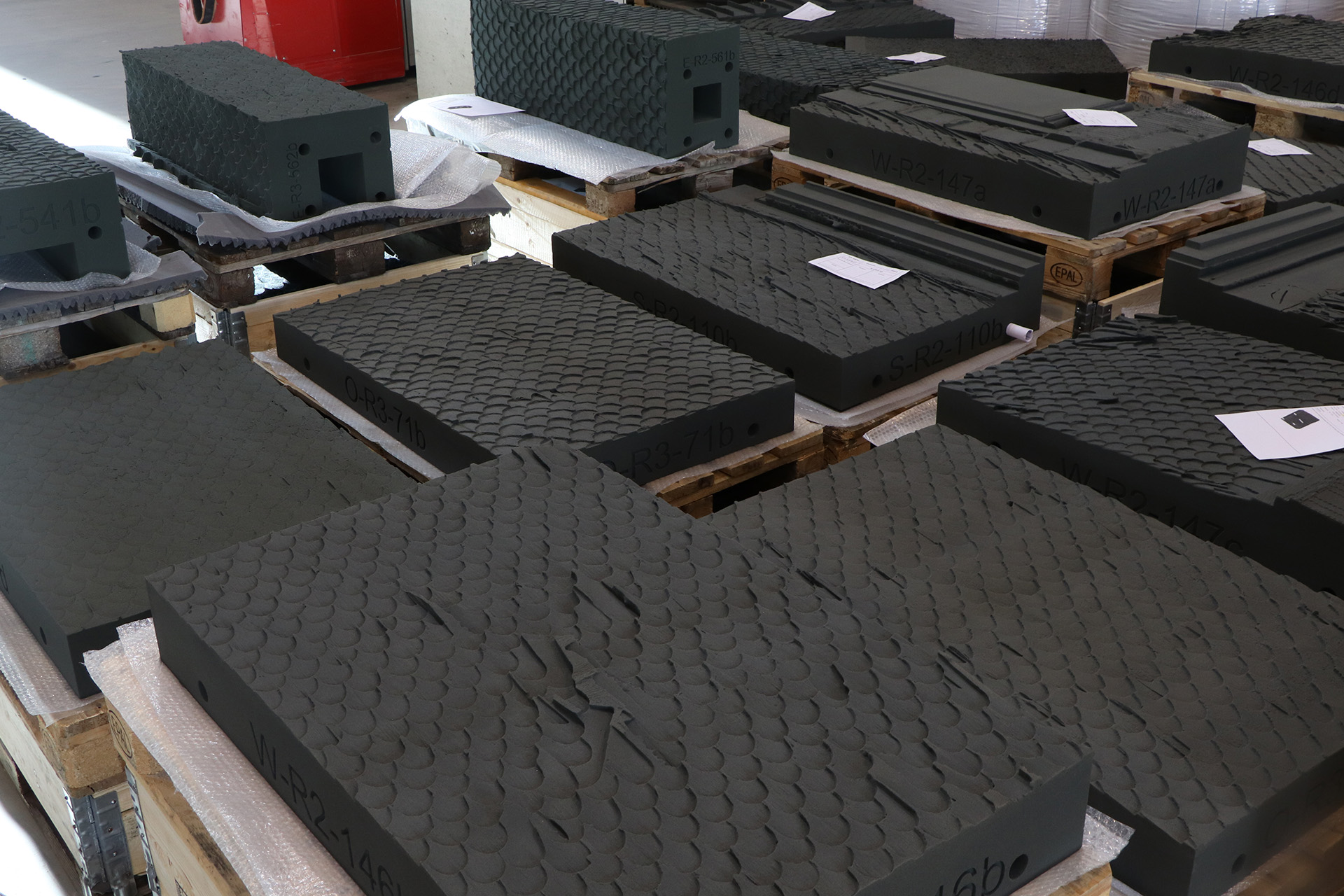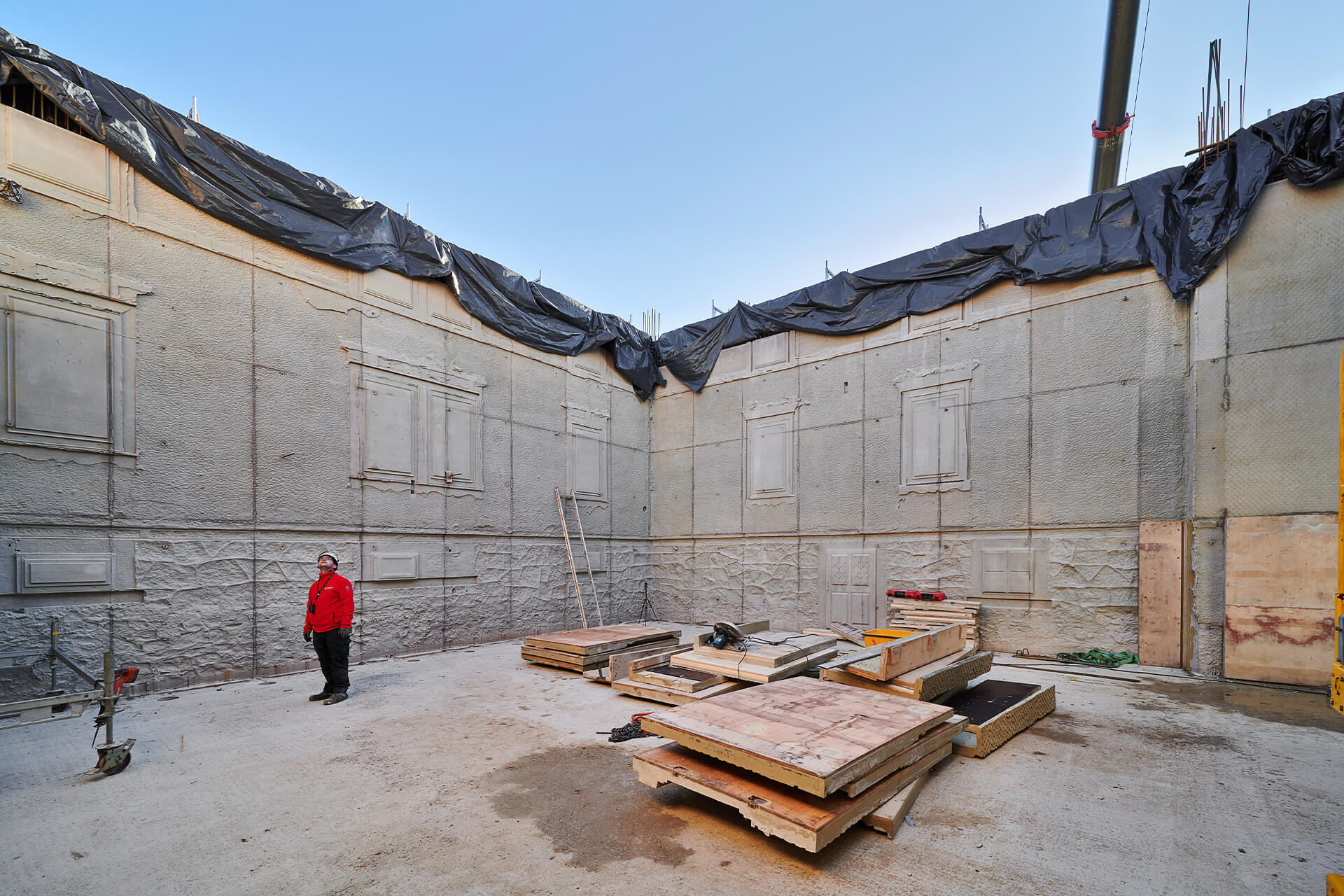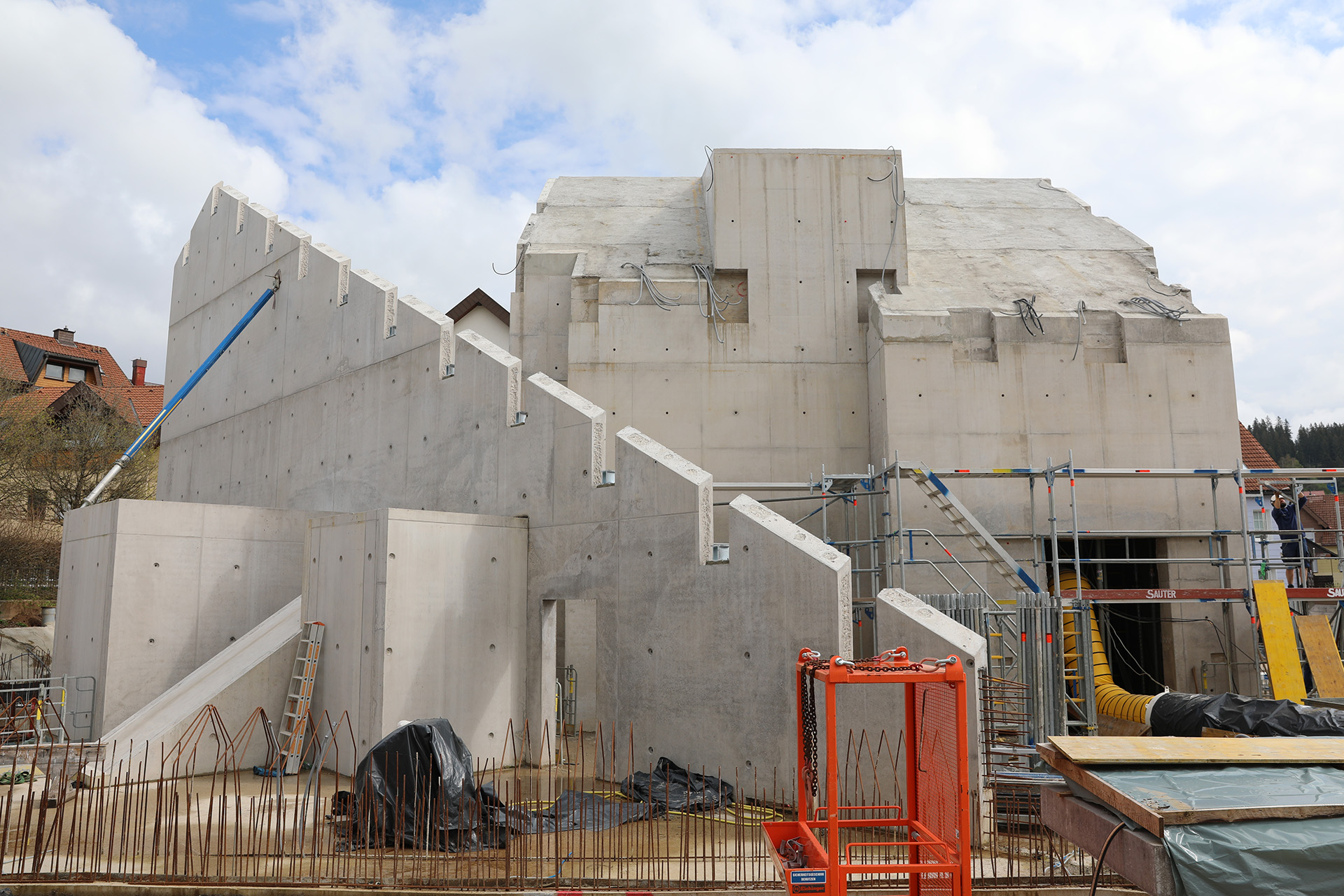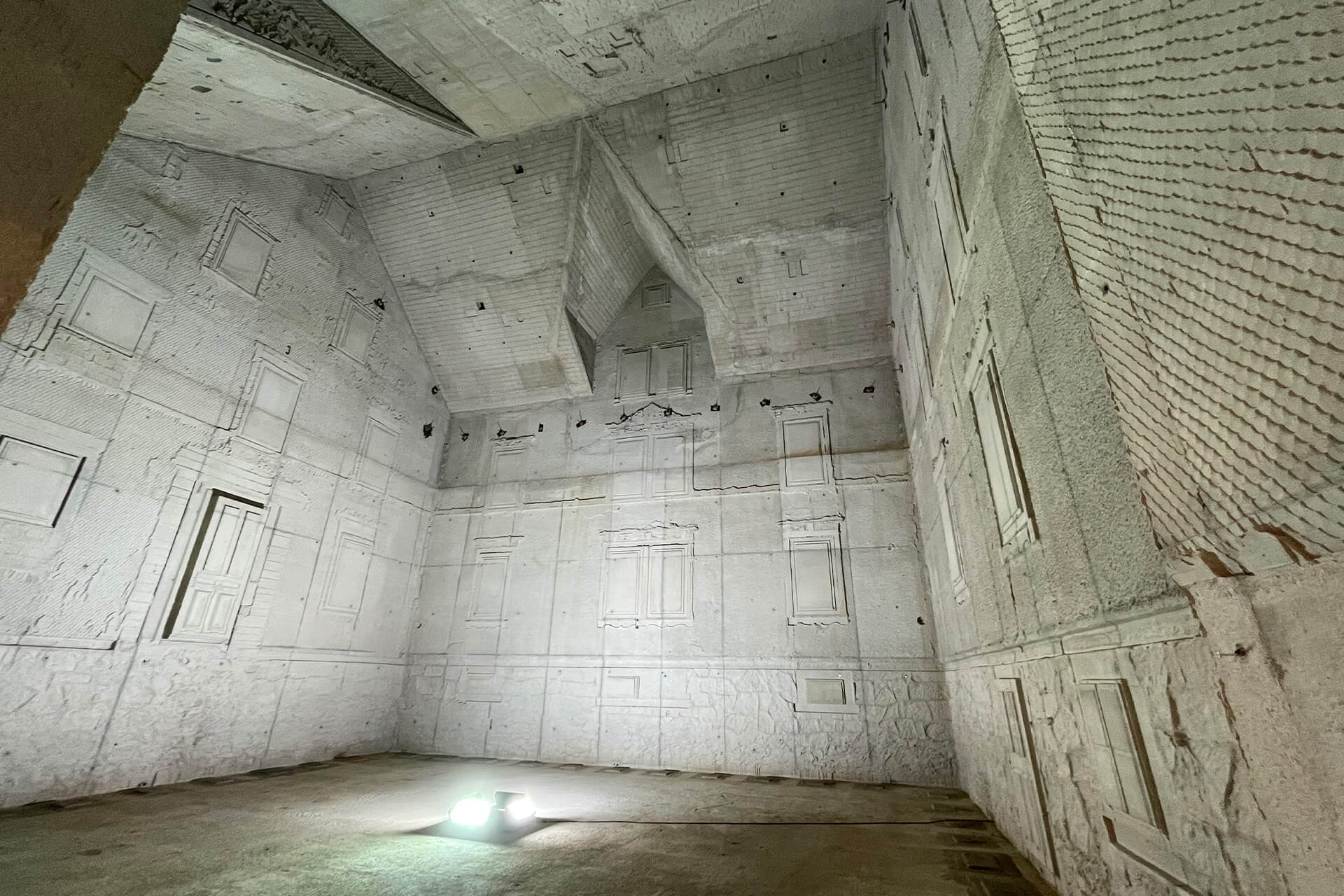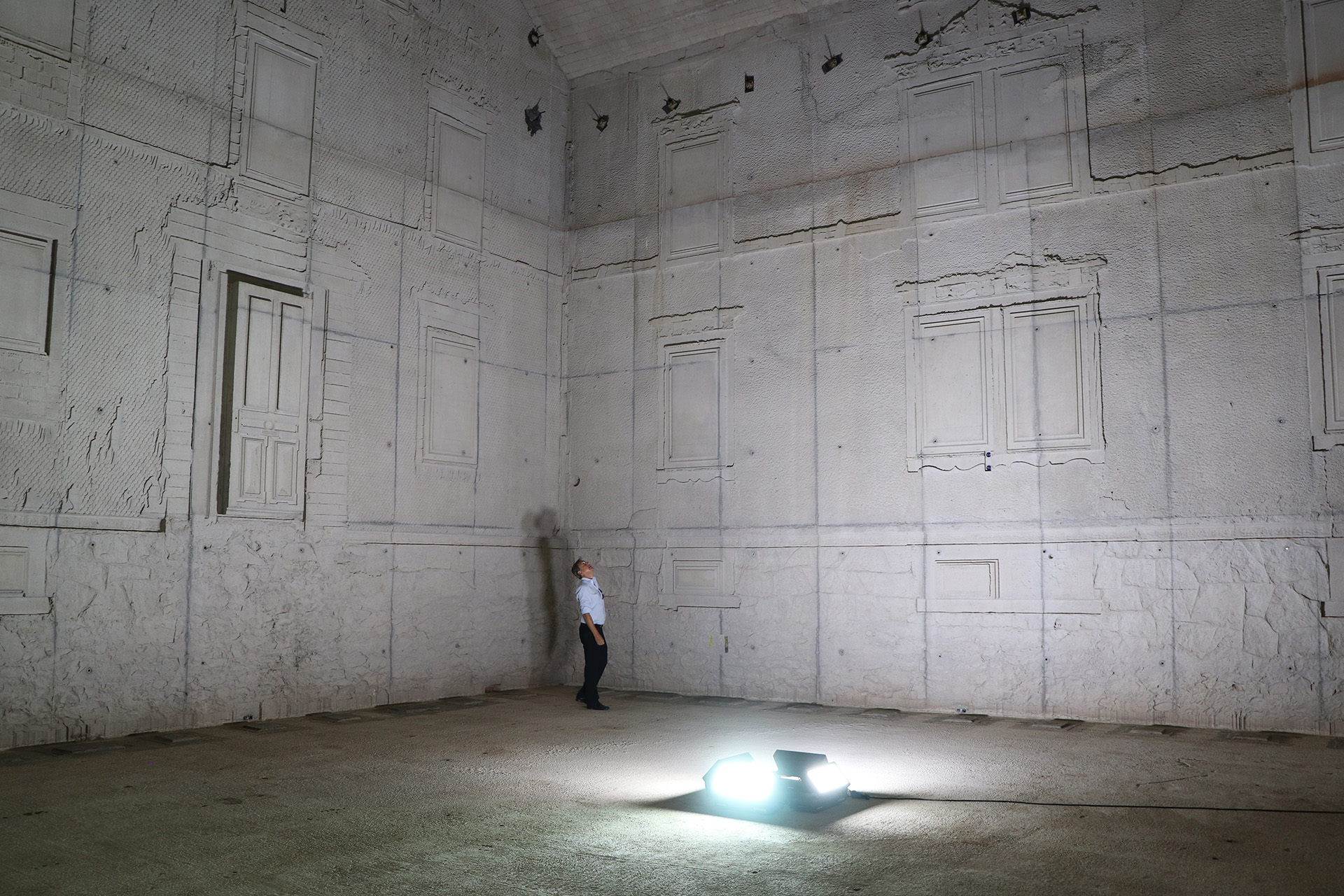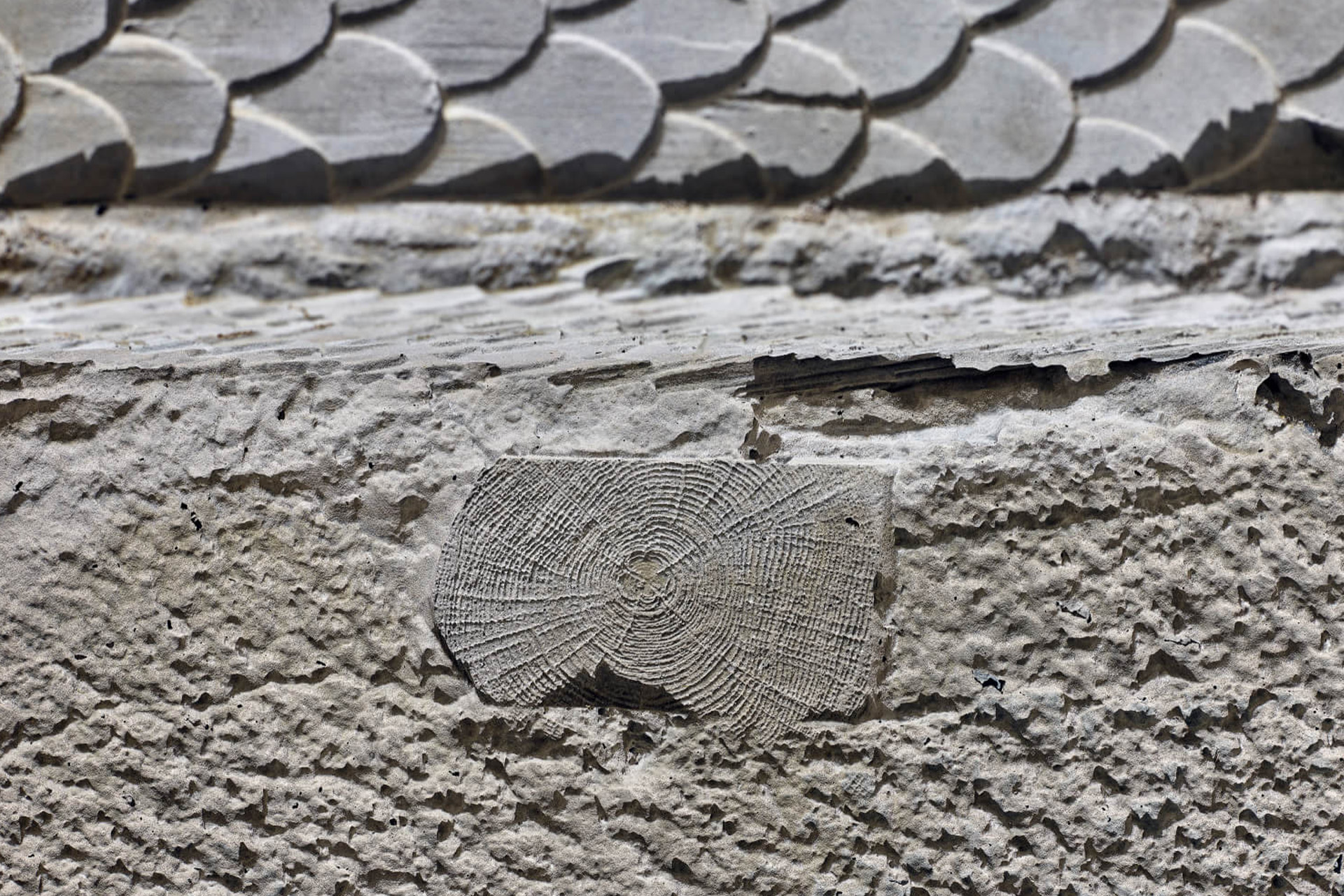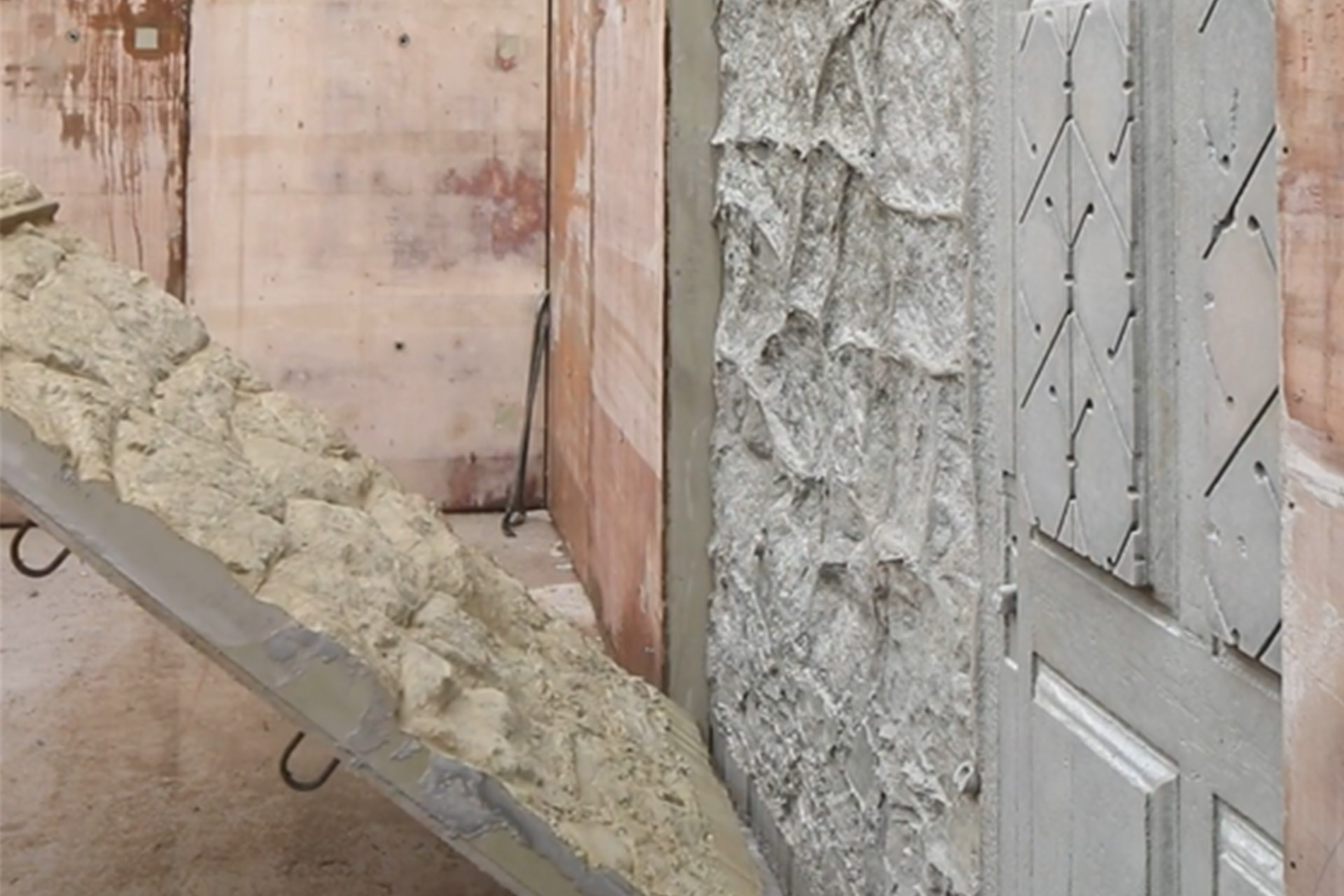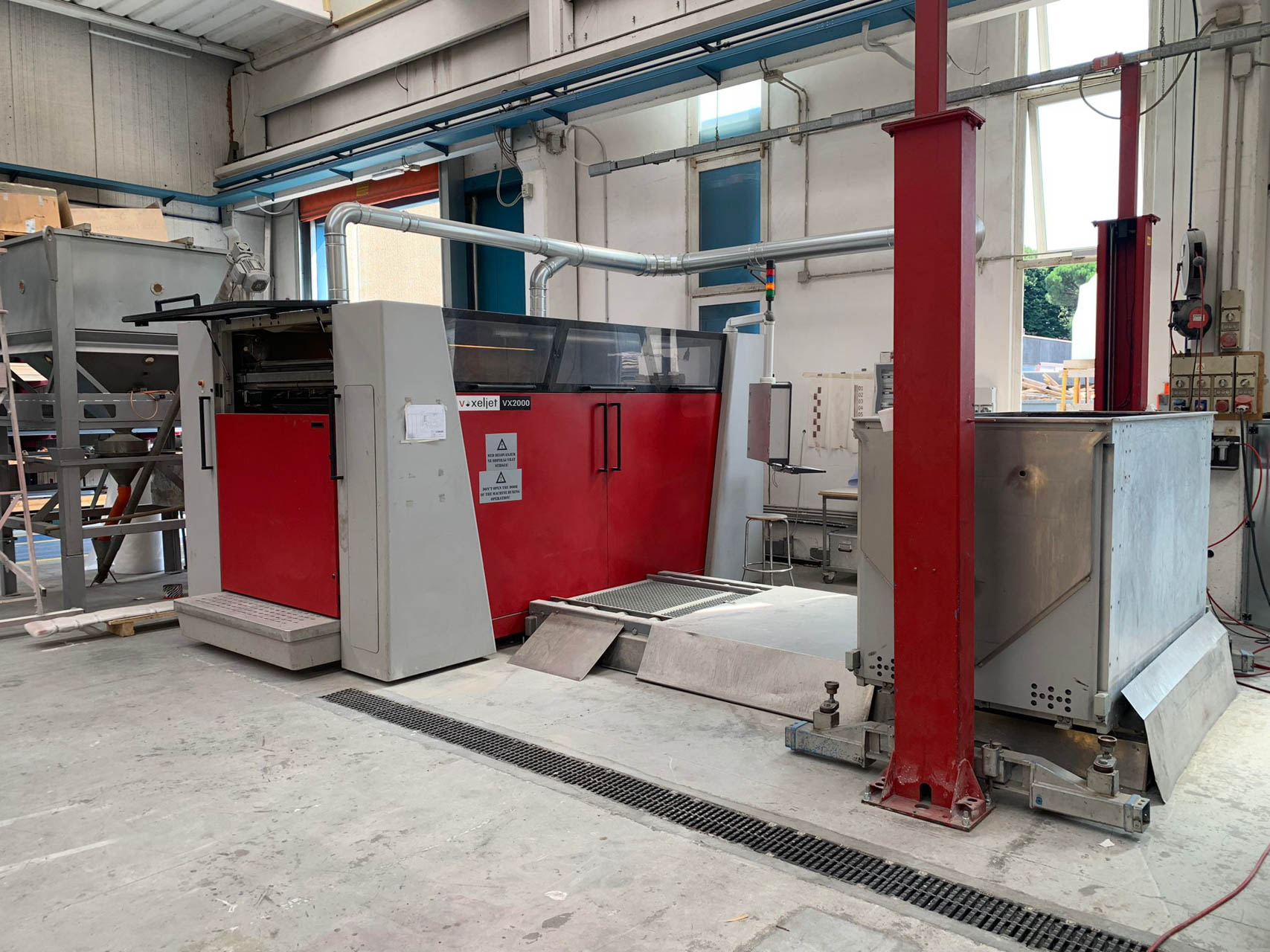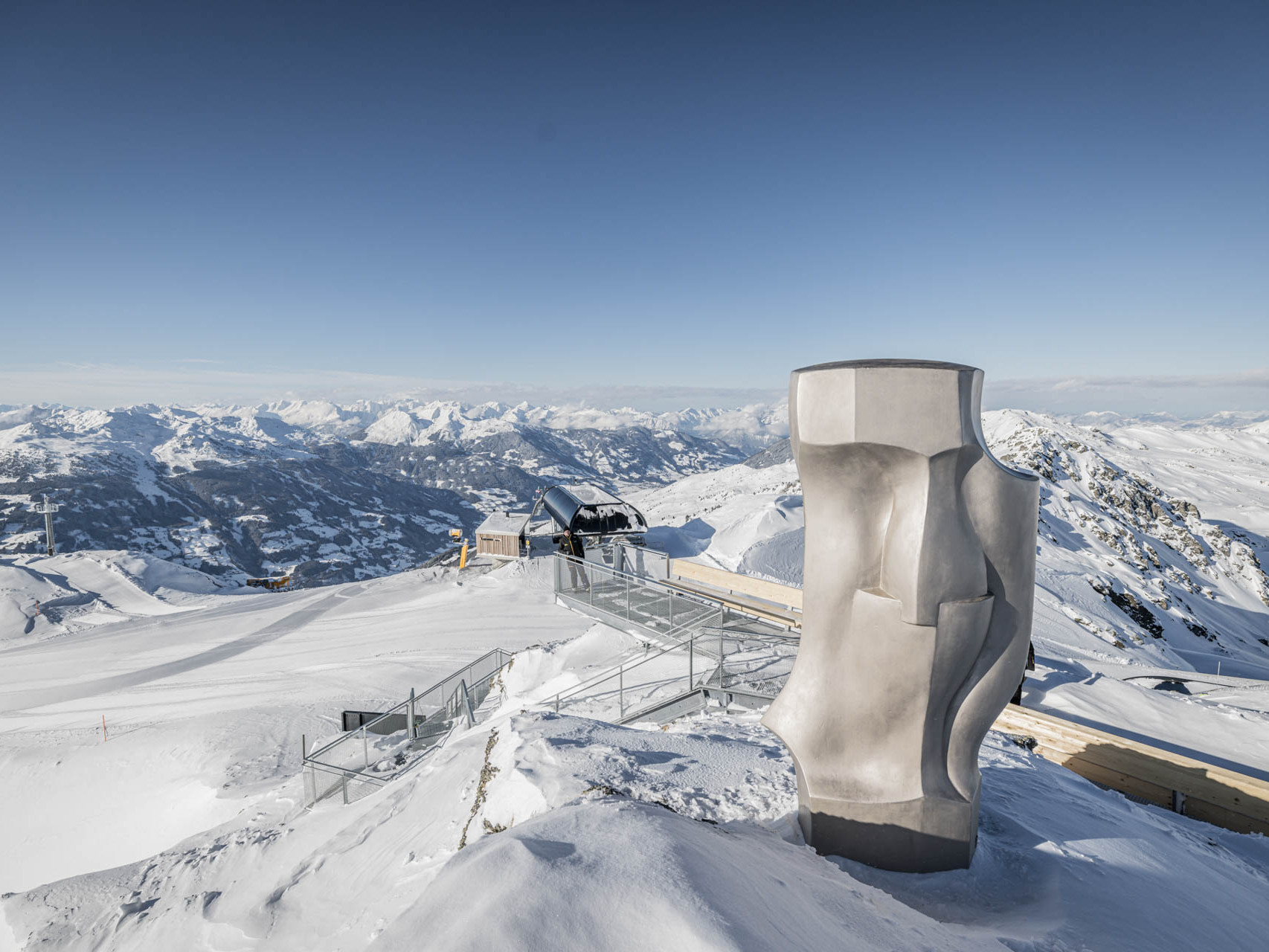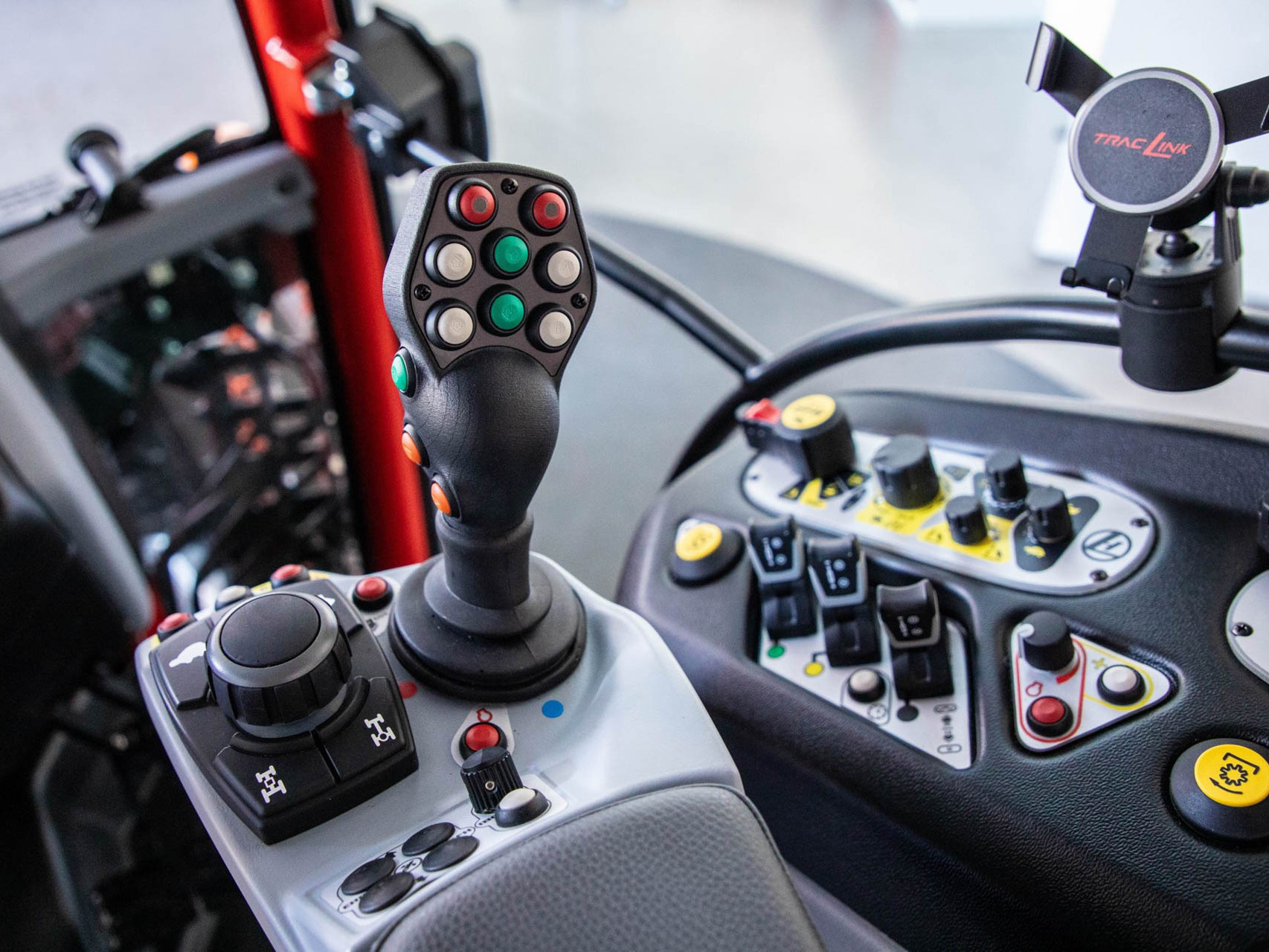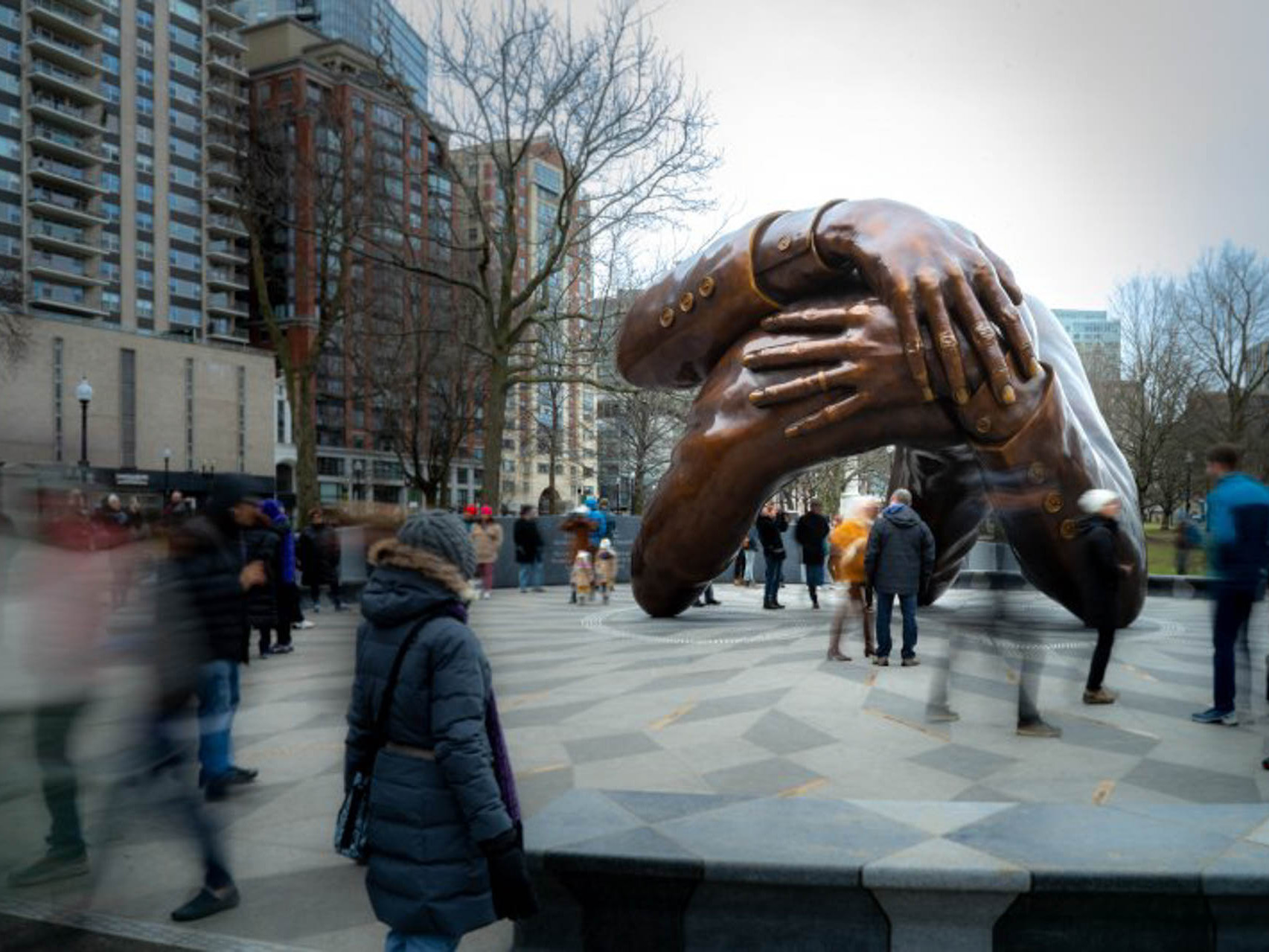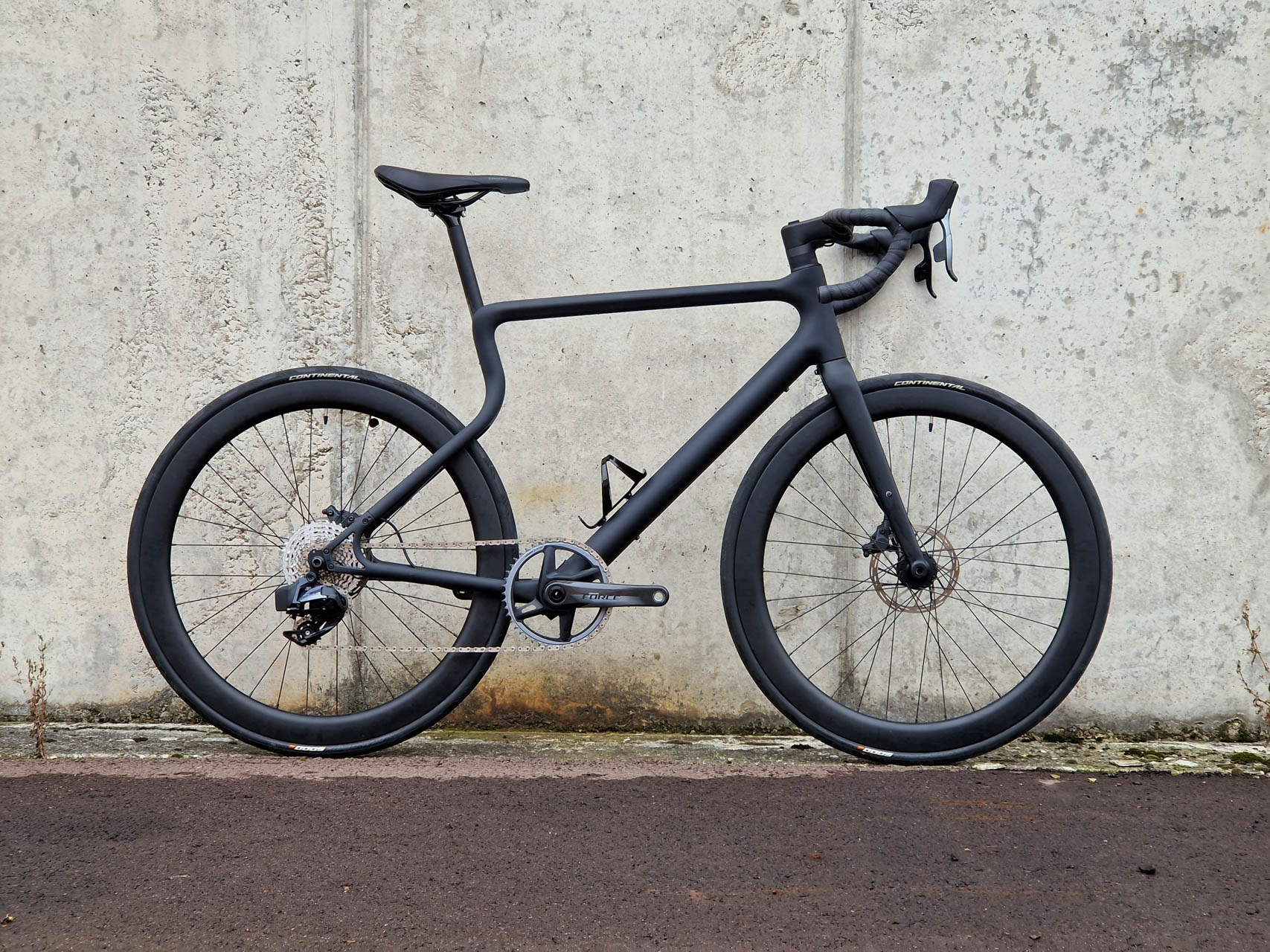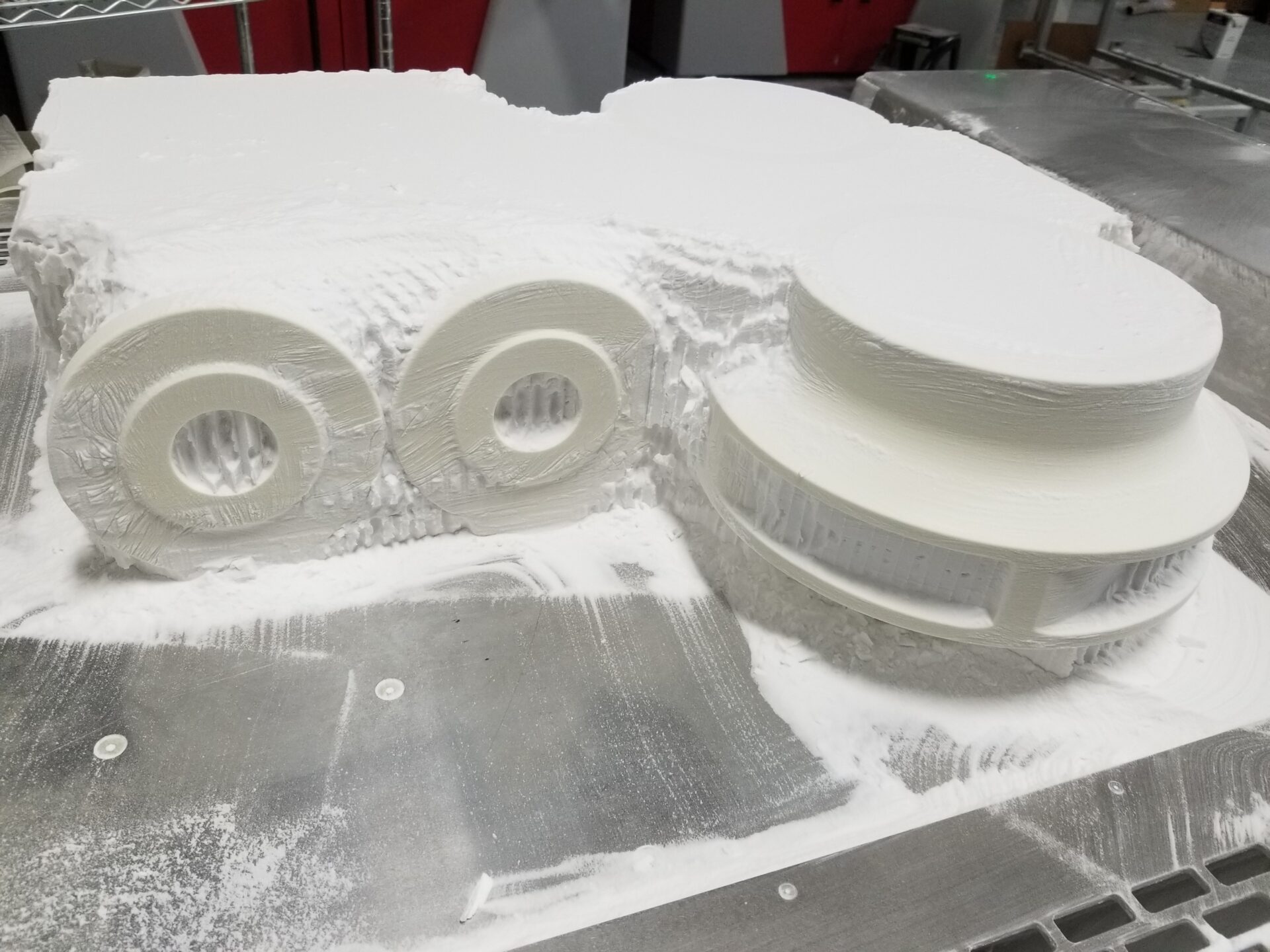- Home
- Case Studies
- Architecture
- Siedle House
The Black Forest House from the 3D Printer
It was their intention to create a place “that brings people together, inspires and excites.” The heartfelt project of entrepreneur Gabriele Siedle and her late husband Horst has become reality with the Siedle Haus.
From the end of 2024, the cultural center will make the impressive art collection of the two benefactors in Furtwangen publicly accessible and tangible. The special feature: Its interior, the centerpiece and museum-like building area, features a true-to-scale concrete cast of a residential building owned by the Siedle family.
voxeljet used large-format 3D printers to additively produce 1067 facade formwork elements and matrices for the unique structure. The joint project involved numerous architectural offices, planners and craftsmen. The ambitious new building was realized by Brandlhuber+Hotz+Architekten, a project-related office merger of Arno Brandlhuber b+ from Berlin and hotz+architekten from Freiburg under the direction of Michael Eichmann.
The history of the Siedle company lays the foundation for the Siedle Haus
Furtwangen has 9,000 inhabitants and is located in the middle of the Black Forest in Germany. The family-owned company Siedle has been manufacturing here since 1750, and the area has a long history in the manufacture of clocks and precision mechanical products. What began for the Siedle company here in a Black Forest house with castings for the clock manufacture, turned into an industrial company with a new factory building in 1870. Today, Siedle is known throughout the world for its building communication technology, home and door intercom systems.
From the idea...
In the 1980s, the current managing director Gabriele Siedle and her husband Horst began collecting art. Their large collection includes works of classical modernism, for example by Pablo Picasso and Ernst Ludwig Kirchner, and is owned by the charitable Horst and Gabriele Siedle Art Foundation. The works, as well as various art and educational formats, will be presented at Siedle Haus in the future.
...to the concept of the "house within a house“
Inside the Siedle Haus is the concrete cast of what used to be the existing building. It forms the core of the architecture and could only be realized in such detail using 3D-printed matrices. Using the possibilities of additive manufacturing – with the help of extremely detailed scans and CAD data – voxeljet made the previously dilapidated building durable for eternity. The facade cast in concrete forms the house within the house. The exterior facade of the original house in inverted form is now the interior facade of the new exhibition space, which houses the art collection.
The interior is encased in an imposing wooden structure with a span of up to 25 meters and roof surfaces that reach almost to the ground, just like a classic Black Forest house. A surrounding glass facade up to 13 meters high envelops the building, making it open and accessible at the same time.
"In order to realize the maximum detailed cast of the former residential building, a special and so far unique process was developed, which has never been implemented in this form and size before."
Michael Eichmann, Architecthotz architekten
The dilapidated Black Forest house comes back to life digitally
The concrete cast of the old existing building now forms the centerpiece of the Siedle Haus. The Swiss office jbks lab captured the house facade digitally using a scanning process that combines laser measurement and photogrammetry. “In order to realize the maximum detailed cast of the former residential building, a special and so far unique process was developed, which has never been implemented in this form and size before,” explains Michael Eichmann, the lead architect of hotz architekten.
The resulting digital and detailed 3D facade image served voxeljet as the basis for the production of their large-format formwork matrices. The matrices reveal the characteristic wooden shingles as well as any cracks, holes, or even moss on the former facade.
The heart of the Siedle Haus comes from voxeljet
Only voxeljet’s 3D printing translates digital theory into visible practice. Based on the CAD data sets, the interior of the Siedle Haus was created layer by layer by the additive manufacturing specialist. The total printed area of 720 square meters was created from around 425 gigabytes of CAD data. To achieve this, the high-precision data was printed at voxeljet from September 2021 using the 3D sand printing process, creating 1067 formwork matrices the size of a Euro pallet. For around 10 months, large-format 3D printers reproduced in such detail and precision what is now the inside of the Siedle Haus. The attention to detail of all those involved was thus also transferred by voxeljet to the additive manufacturing of the unique matrices.
The binder jetting process creates 150,000 liters of detailed shingle impressions
The project used the binder jetting printing process and in particular the VX4000 industrial 3D printer from voxeljet, one of the world’s largest 3D printing systems for sand. With a build area of 4x2x1 meters, the printer has a print volume of approximately 8 cubic meters. The formwork matrices, each about 20 cm thick, thus formed a total volume of more than 150,000 liters of printed sand. The entire print job comprised around 22 fully printed boxes of the VX4000.
In the printing process, the recoater, applies a 300 micrometer thin layer of silica sand to the build platform. The print head then moves over this platform and prints a binder precisely onto the areas where the part is to be created, selectively bonding the sand there. Once a layer has been printed, the recoater and print head lift by exactly one layer thickness and the next layer is recoated and printed. This sequence is repeated until the part is completely printed. It is then unpacked, i.e. lifted out of the print bed and freed of unprinted sand.
In facade construction, the binder jetting process is one of the leading additive technologies. Thanks to its high productivity and scalability, even large-format and highly complex projects such as the Siedle Haus can be implemented cost-effectively and with pinpoint precision.
Precision beyond traditional manufacturing
Conventional manufacturing techniques would not have been able to realize the level of detail and complexity that voxeljet was able to reproduce with the help of 3D printing. Thanks to the fine printing technology, even the annual rings of the wooden beams on the front sides are immediately recognizable. The imperfection of the former residential building is the room-defining aesthetic in voxeljet’s prints of the Black Forest shingles in deep black. Functionally integrated in the printed matrices, recesses for lights and cameras in the future museum were already thought of and printed. Subsequent processing on the construction site was therefore not necessary.
All 1067 matrices were subsequently infiltrated with epoxy resin to give the individual panels more stability for the further process steps. The subsequent molding of the matrices with a special PU foam by the company Reckli and the casting in concrete by the company Wackerbau were able to homogenize all imperfections in the residential building by using a very fine, white concrete. This is how the negative of the old house was finally created.
Additive manufacturing in architecture with a difference
Additive manufacturing has played a role in the field of architecture for quite some time. While most approaches and technologies focus on the direct printing of concrete, voxeljet came up with the idea of combining 3D printing and concrete casting through printed formwork. Over the past eight years, the printing specialist has steadily developed this approach. Initial tests and studies were followed by an 80m² ceiling on a research construction site and the first use on a real construction site in Leipzig, involving a complex spiral staircase.
The steep experience curve, coupled with 400 tons of monthly printing capacity in voxeljet’s on-demand service center, ultimately meant that the results for the Siedle Haus were also convincing right to the end. In addition to its art and cultural function, the Siedle Haus impressively demonstrates the unique possibilities that additive manufacturing offers architecture and how interdisciplinarity and craftsmanship were able to create an impressive and unique monument.
Collaboration is everything
More than 30 trades involved were only able to achieve what Gabriele and Horst Siedle wanted for their town of Furtwangen through close and productive cooperation. Jörg Kaltmaier, Manager Customer Recruitment and Project Manager at voxeljet, found the work on the complex common goal very positive: “The sheer project dimension and the detailed approach impressed us right away. When you see the Siedle Haus live, you quickly realize that it not only houses art, but is a unique work of art itself. Thanks to the close coordination and great interaction between the trades, experts and specialists, we were all able to work together to realize a unique vision for the ages.”
The opening of the art and culture center is planned for the end of 2024. With the concrete casting as its architectural core, the Siedle Haus now makes an impressive reference to the region and the origins of the company. For the history of Siedle also began in the mid-18th century with the casting of bells and clock parts – in a Black Forest house.
More Case Studies
Lanulfi Models optimizes mold making with VX2000
The integration of voxeljet’s VX2000 has redefined Lanulfis approach to metal casting. It offers significant reductions in lead times and enhances design capabilities.
3D-printed sculptures at 2500 metres
At 2,500 metres in the Tyrolean Alps, these 3D-printed sculptures enjoy a special view. They are the fulfilment of a long-held dream of Tyrolean artist Magnus Pöhacker.
3d printed joysticks for tractors and machines
For Lindner Traktorenwerke, 3D printing is already an alternative to injection molding. For example, for customized joysticks and control elements for their tractors.
3D printing patterns for large-scale sculpting
The Embrace is a public artwork in Boston to honor and remember the life of Martin Luther King and his wife Coretta Scott King. The sculpture was created with 3D PMMA printing and investment casting
58 sculptures cast in bronze visualize the Way of the Cross of Jesus in Nebraska, USA. The unique works of art were created by famous artists using a combination of 3D printing, investment casting and bronze casting.
URWAHN – 3D printing in bike manufacturing
To produce its e-bikes, URWAHN has focused on reshoring and lean management and is achieving these goals through additive manufacturing. Learn what role the voxeljet technology plays.
PMMA 3D printing conquers North America
Express Prototyping belongs to the leading experts for 3D printing investement casting patterns in North America. Learn from the CEO Thomas Müller how he established the business and how he sees the future.
Industrial 3D printers
Our portfolio of industrial 3D printers ranges from compact systems for research to additive series production.
